As its winding course runs past Balmoral Castle the River Dee is flanked by a mix of farmland and woodland. Much of the woodland is composed of majestic old Scots pines (Pinus sylvestris) growing above vegetation dominated by heather (Calluna vulgaris). Plant communities can tell us about the conditions provided by the soil and underlying rock; both of which can be connected through the process of soil formation. Reading the landscape like this, through the plants growing in a place, we can begin to work out where a particular plant species ought to thrive. In this way our conservation planting can be led by nature rather than being something we impose, based on our wishes and preconception. This more sensitive approach to planting is at the heart of the translocation of threatened plants.
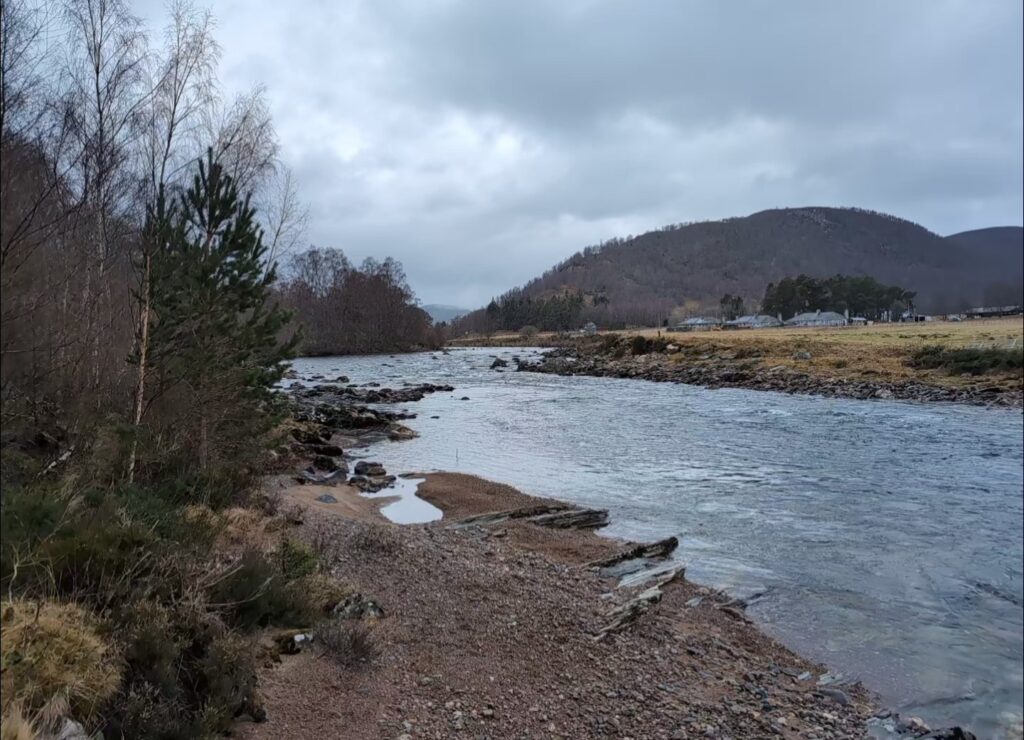
Driving along the valley of the Dee for a meeting with Glyn Jones, Head Ranger at Balmoral Estate, I’m assessing the suitability of the riverside land for planting wych elm (Ulmus glabra) for the Scottish Plant Recovery programme. There are records of elm in the area and just before turning off the main road that passes the Castle there is a steep bank leading down to the river with a mix of healthy elms with some that have been killed by a previous wave of Dutch elm disease. The disease is a serious threat to the elms and is why we have included elm in threatened plant recovery work we are doing funded by the Scottish Government’s Nature Restoration Fund. The presence of elm is a good sign, but suitable elm habitat does seem to be quite patchy. The better soils on the lower slopes leading down to the floodplain and the well-drained flat river terraces are where elms would naturally grow.
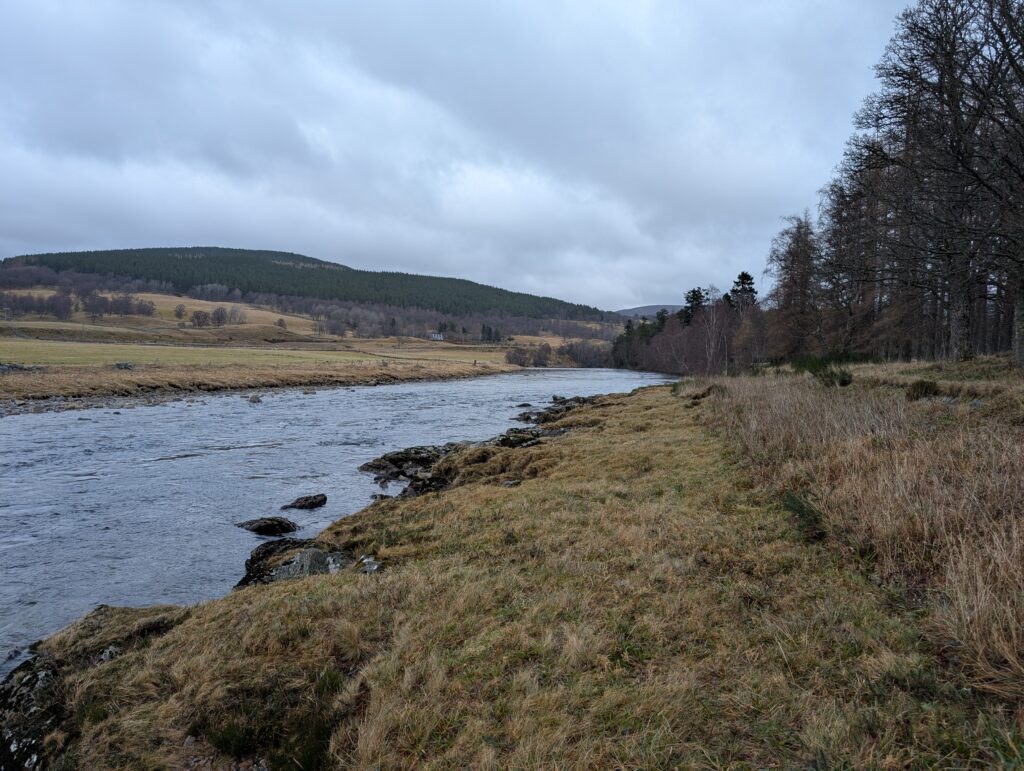
Aline Finger, Conservation Geneticist and project lead, and I head off with Glyn in his four-wheel drive to assess the potential for elm planting at various sites Glyn wants to show us along the river. Balmoral Estate is already an important partner for the Scottish Plant Recovery programme. Alpine blue-sow-thistle (Cicerbita alpina) has been planted in estate woodland that is part of a river restoration scheme. Burns running through the woodland are tributaries that feed into the Dee. The removal of past river engineering, that prevented the dynamic movement of water through the woodland in an ever-changing network of small channels, has allowed the return of often-temporary burns and restored a missing element of the woodland ecosystem. In Scotland, the sow-thistle may have become restricted to mountain ledges, due to heavy grazing pressure, but we know from elsewhere in Europe that it grows near to rivers in what is called riparian woodland. Winter floods recently uprooted some of the planted sow-thistles, but Glyn acted quickly to rescue dislodged plants and relocated them to safer places.
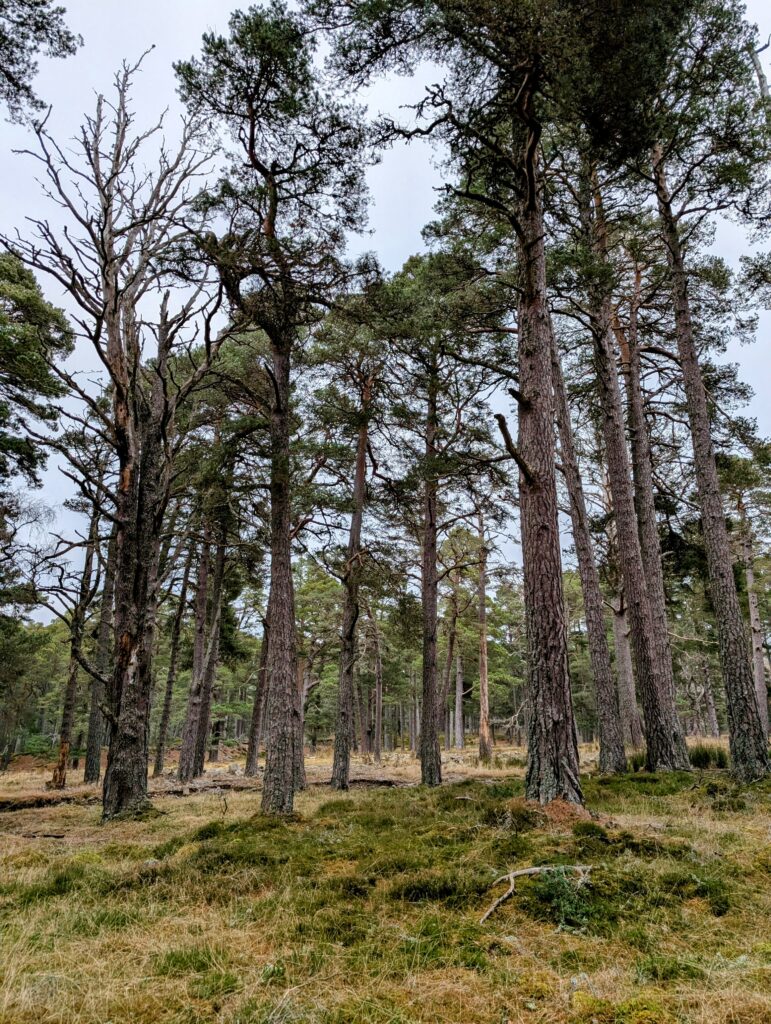
Balmoral has also provided a home for some of our native crab apples (Malus sylvestris) as part of hedge planting for pollinators. This small tree has become scarce due to a lack of appreciation of the value of scrub and is now threatened by hybridisation with cultivated apples. The abundant spring blossom and crop of fruit make this tree an important food source for a range of different animals and a good addition to a mixed hedge designed to improve overall habitat quality.
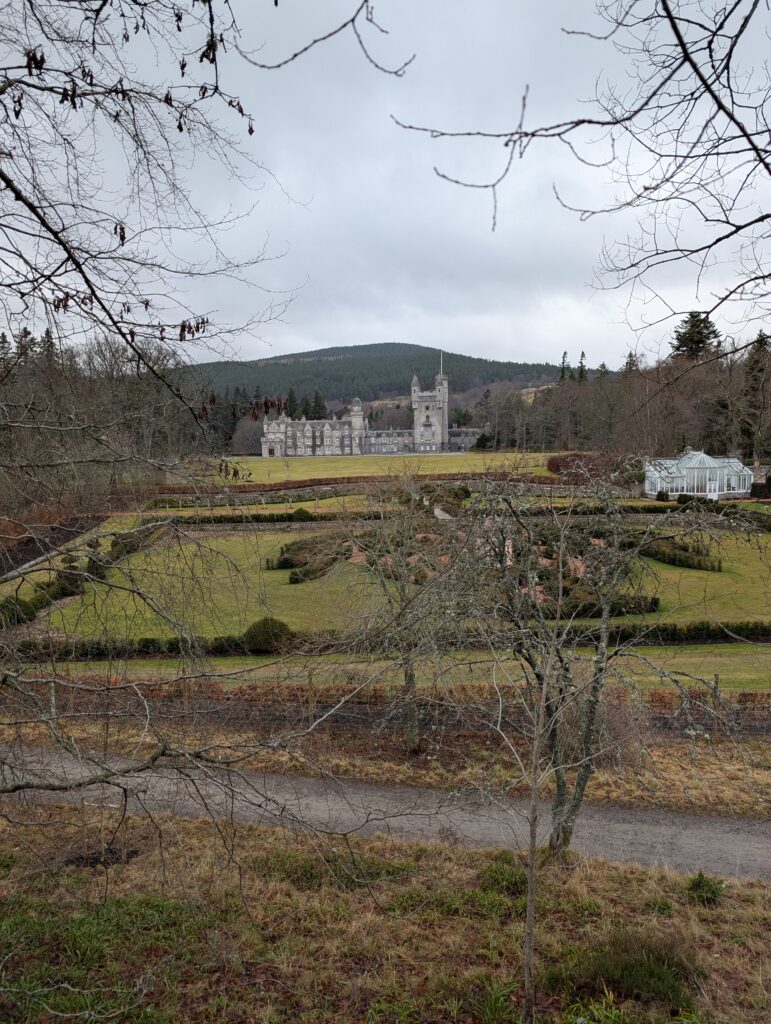
Our first stop is a sloping bank of former grazing land close to the Castle and visible from the royal apartments. Near the top of the slope, beside a road, an old elm is a very encouraging sign that this is a good spot. The lush grass suggests better soils that will suit elm. So, without even leaving the car, we agree our first planting location. Working our way upstream we visit a succession of suitable places. There is an impressive amount of native woodland and hedgerow planting happening and this is being driven by nature restoration and targeted conservation work for certain rare and threatened species found on the estate. Glyn explains that aspen (Populus tremula) is a key food source for the caterpillar of the dark bordered beauty moth (Epione vespertaria). This moth is on the brink of extinction in Scotland. Extensive planting of aspen on the wetter soils is providing much needed new feeding habitat.
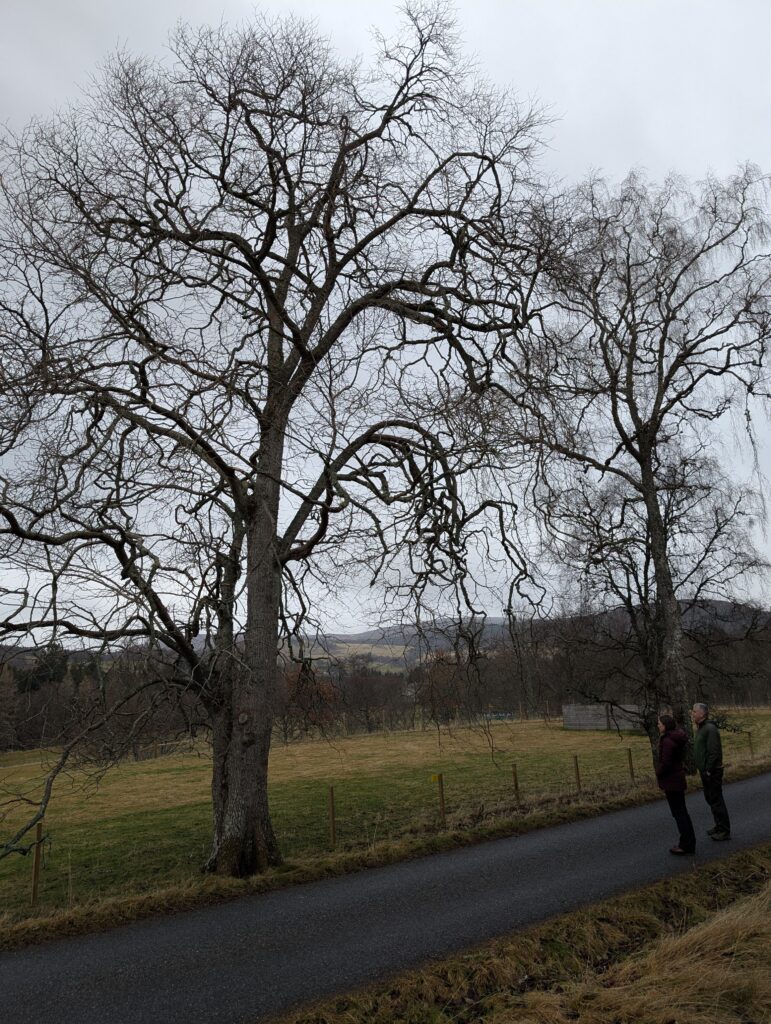
This riverside tree planting is also improving the habitat within the Dee for aquatic life and the Atlantic salmon (Salmo salar). The idea that salmon need forests and forests need salmon was explored in my last post: Restoring salmon elms in Caithness. Glyn explains that salmon numbers went into freefall, and it was looking like the Dee’s salmon could be lost completely. Ongoing monitoring, carried out by the estate, indicates a degree of recovery. The increase of riverside woodland is one measure that can be taken to improve things for the salmon. So, our elms will be helping the conservation of the local elm population, already under threat from disease, and the health of the river, that will ultimately benefit salmon. The reason the new elms may stand a better chance against disease is down to how the Scottish Plant Recovery team bred them from survivors of disease in Southern Scotland. The process is described in an earlier post: Next gen elms.
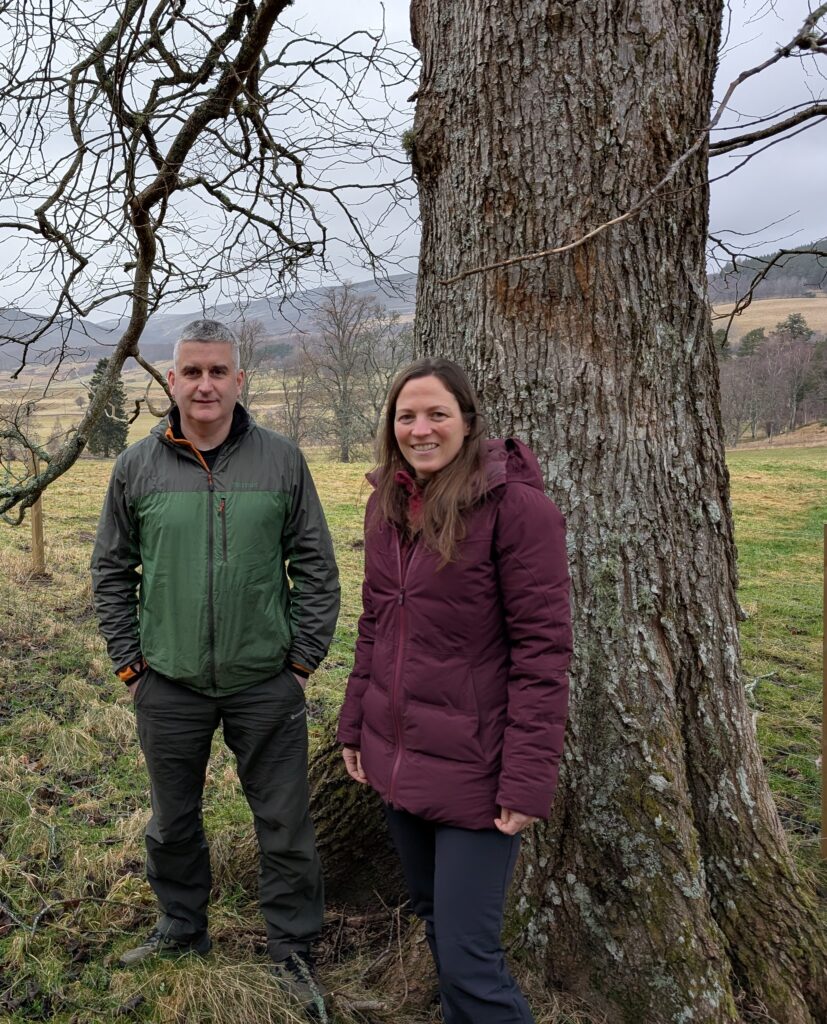
Management to improve the quality of the habitat for capercaillie (Tetrao urogallus) on the estate is paying off and the local population of this impressive bird, related to grouse, is doing well. As we drive around exploring for elm sites the list of other threatened species that Glyn and his team are working to conserve continues to get longer. Thirty clones – genetically different individuals – of a dainty little plant of pinewoods called twinflower (Linnaea borealis) are being cultivated in specially constructed beds. The plants have been collected from across the estate to act as a living gene bank. The genetic diversity contained within this collection will be assessed by the Botanics team by analysing DNA extracted from leaf samples. This will confirm if they are all unique, in genetic terms, and how they might best be used if they were to be planted at suitable wild sites as part of a conservation translocation project. The potential is there waiting to be utilised, but the science needs to be done first to inform the planning and decision making.
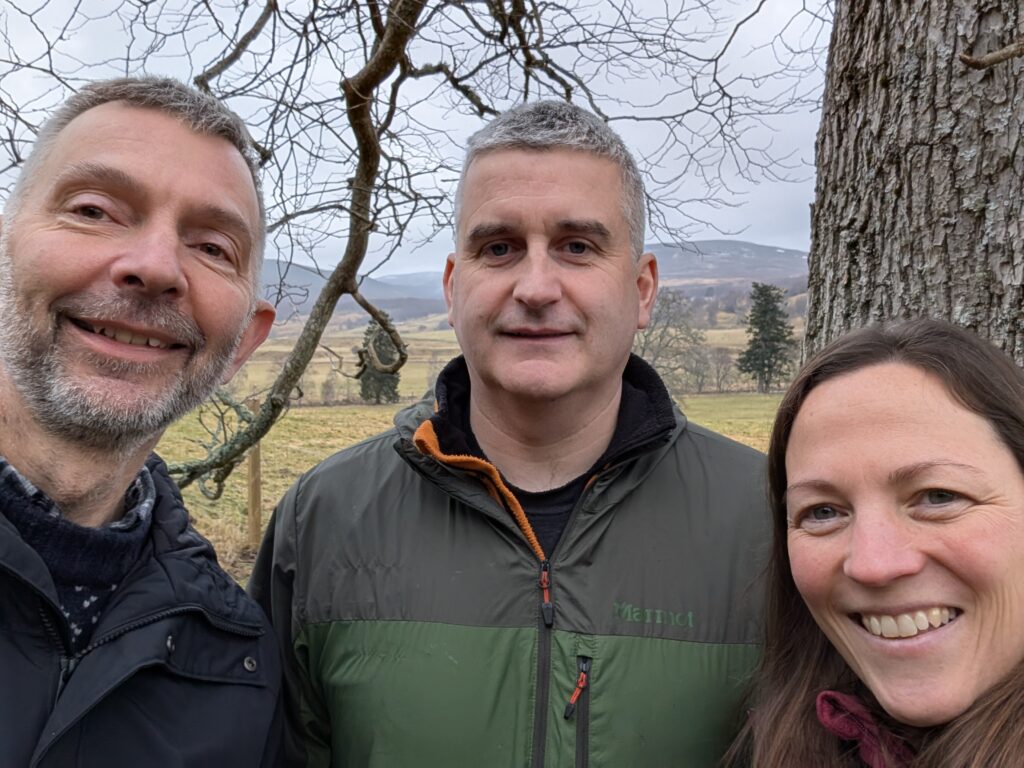
We round off a very successful recce to assess elm planting potential with a visit to the pinewoods site where the sow-thistles were planted about a year ago. Most of the plants look in good shape, although they are dormant and yet to come back into growth. We check on the rescued plants that were nearly washed away in a flash flood a few months ago and establish that the losses seem to be a very small proportion of what was planted. This is a reminder that, although some may criticise translocation as ‘gardening’, these plants are left to fend for themselves and need to be able to sustain themselves where we plant them. This will only happen if we have judged their needs correctly and found a suitable spot. Confirmation of a job well done will be seeing a new generation of truly wild plants establishing themselves near to where we have planted. It may take a few years of anxious waiting, and not all translocations will work, but the sense of achievement for all involved when we judge a plant to be self-sustaining will be enormous.


- X @TheBotanics
- X @nature_scot
- X and Facebook @ScotGovNetZero
- Facebook @NatureScot
- #NatureRestorationFund
